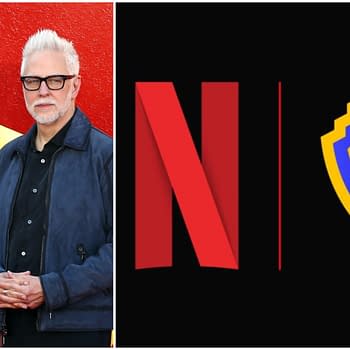Posted in: Movies | Tagged: app, film, haunting melissa, Review
Haunting Melissa – Opening The Doors Of A Transmedia Puzzle

Melissa's House has lots of doors.
Haunting Melissa is trying to be several things at the same time; it's an unconventional horror movie, played out as a serial fiction through iOS devices, with each instalment – bought singly or as a season pass in HD or SD – sent a numbr of days after the preceding one has been played; it's a piece of online, transmedia puzzle-unlocking, replicating aspects of William Gibson's prescient vision for the form in Pattern Recognition (2001); and where it's best is as a piece of digital fiction that recognises the means of its creation – through fragmentary chatroom footage, webcam, therapy diary and in-store CCTV – and subsequent reception on a device you're probably holding in your hand or on your lap; this isn't something designed to be viewed from the safe distance of a sofa or cinema seat.
Melissa Strogue is living in a house by herself. Her mother has died, her father is away, and her boyfriend won't come home from college. And something is trying to talk to her. Something that appears on video, then is gone at a rewatching of the same footage, something that the cameras that also haunt Melissa capture without her knowing, or seeing. We see though.

What renders this as an above ordinary digital experiment though is the way in which the whole experience is designed to manipulate social media and digital technology. Each installment arrives a set number of days after the last, but the release schedule timer starts the moment you view the first episode. Even a cursory glance on the project's Facebook group indicates there are subscribers who are ahead of you and have seen more – a neat way of building anticipation with a short pay-off period.
The other, more significant achievement is to manipulate the digital files after they've been watched. A visible presence in a room is gone from the same footage on subsequent viewings, because it's not the same footage. While that sounds obvious, it's a conceit that works beautifully within this story. If this were a DVD , or a streamed service on a TV screen, then we're in control of the pace of viewing. We know that our DVD is the same physical object it was yesterday, that the show lined up on our PVR is the one we programmed the machine to record or download. Digital media – in the way Edelstein and his team have employed it here, doesn't afford the same permanence. We might assume that the files are the same; we're used to that being the case with video stored on a personal device, but everything under the hood, so to speak, is invisible until we press play. Changing things on a subsequent viewing is a simple device, but it serves to slip us into Melissa's psyche, removing a safe distance from the story, and to ask us to doubt what we're seeing.
I'm four episodes in at the time of writing, with seven to go. While the broad conventions of horror fiction are present, this is an arresting, platform-specific piece of work so far.
Melissa's House has lots of doors.
Some of them ought to remain closed.
[youtube]http://www.youtube.com/watch?v=NOK0eZPWWRU[/youtube]












